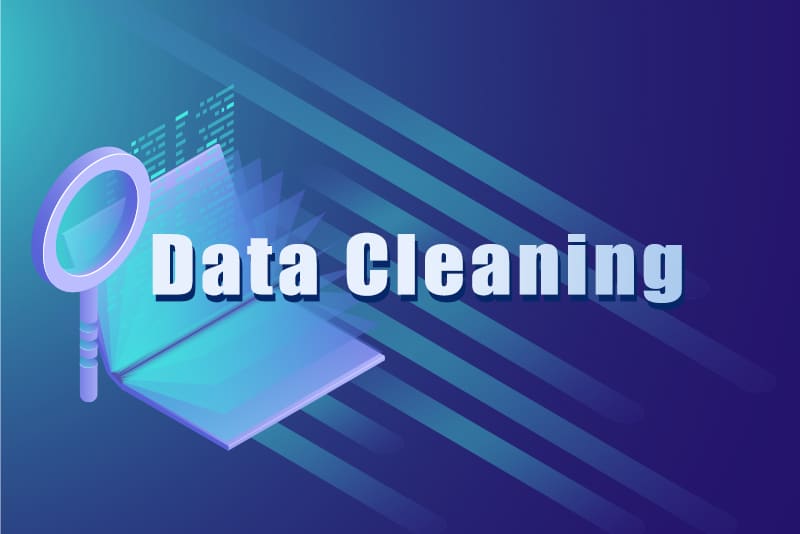In today’s data-driven world, companies are recognizing the need to embrace data-driven strategies to stay ahead of their competitors. Reports from Statista (paywall) reveal that in 2020, an impressive 77% of companies in the United States relied on data to drive their business decisions. Accurate and up-to-date information is critical to make informed decisions and drive growth. However, with the increasing volume and complexity of data, ensuring its quality can be a daunting task. Data cleansing, also known as data scrubbing or data cleaning, is a crucial process in maintaining accurate and reliable data. While relying on data cleansing companies to cleanse and harness data, organizations can optimize the quality of their data by implementing effective data governance practices.
What is Quality Data?
Quality data goes beyond a single criterion. It should be accurate, comprehensive, consistent, reliable, secure, up-to-date, and not confined to specific departments or systems. High-quality data is commonly described as data that is “suitable for use in operational activities, decision-making, and strategic planning.”
Moreover, high-quality data provides an accurate and reliable representation of real-world phenomena and entities. For example, if a dataset is meant to capture information about customer addresses, high-quality data would accurately reflect the real addresses of those customers. It would not contain incorrect or outdated addresses that do not correspond to the physical locations in the real world.
Consequences of Poor Data
Poor data quality means incomplete, redundant, unnecessary, or inconsistent data. What happens when an organization’s data is not accurate and reliable? As time goes by, the accumulation of customer information and internal records can lose their integrity or become corrupted. However, the importance of data quality extends beyond just customer-related information. Senior executives and management rely on internal data to drive day-to-day operations and achieve business objectives. Bad data leads to poor outcomes. It can hinder informed decision-making, leading to potential revenue loss and decreased productivity. Moreover, bad data can impede the efforts of businesses to comply with regulatory requirements, exposing them to potential legal and financial penalties. Gartner reports that businesses suffer an average annual cost of $12.9 million due to subpar data quality.
Data cleansing involves identifying and rectifying errors, inconsistencies, and inaccuracies in datasets to ensure data integrity. Let’s explore essential data cleansing best practices, along with key steps to achieve optimal data quality.
Steps and Best Practices for a Clean and Sustainable Database
Businesses can use various strategies to ensure the accuracy, completeness, and consistency of their data. They can establish data quality policies and procedures that focus on maintaining accuracy and keeping data up-to-date. Implementing data governance strategies allows organizations to effectively manage and monitor their data. Additionally, businesses can utilize data quality metrics and analytics to continuously track and measure the quality of their data.
Here are eight actionable strategies to ensure that your database is accurate, up-to-date, and free from errors:
-
- Clearly define data quality objectives: Before diving into data cleansing, it’s essential to establish clear objectives and define the desired level of data quality. This includes identifying critical data elements, data sources, and specific quality standards to be met. Setting measurable goals helps guide the data cleansing process effectively.
- Conduct data profiling and assessment: Conducting data profiling and assessment is necessary to understand the quality and structure of your data. This involves analyzing data patterns, identifying anomalies, and assessing data completeness, accuracy, and consistency. Data profiling tools can automate this process, providing valuable insights into data issues and discrepancies.
- Standardize and validate data: Standardizing data formats and values is vital for consistency. Implementing data validation rules ensures that data conforms to predefined standards and business rules. This includes validating data against pre-established ranges, formats, and patterns, reducing errors and improving data accuracy.
- Remove duplicate and inconsistent data: Duplicate and inconsistent data can lead to skewed analytics and inaccurate insights. Utilize deduplication techniques to identify and eliminate duplicate records within datasets. Resolve inconsistencies in data formats, naming conventions, and values to maintain uniformity and enhance data quality.
- Perform data enrichment: Data enrichment involves enhancing existing datasets with additional relevant information. This can include appending missing data fields, verifying and updating outdated information, and incorporating external data sources to enrich and enhance the quality and completeness of your data.
- Establish a data governance framework: Implement a robust data governance framework that outlines policies, procedures, and responsibilities for data quality management. Assign data stewards who oversee data cleansing processes, ensuring ongoing maintenance and adherence to quality standards. Regular audits and reviews help to maintain data integrity over time.
- Automate data cleansing processes: Leverage data cleansing tools and software to automate repetitive tasks and streamline the data cleansing process. These tools assist in data profiling, validation, deduplication, and error correction, saving time and improving efficiency.
- Monitor and maintain data quality: Data cleansing is an ongoing process, and regular monitoring is essential to sustain data quality. Implement mechanisms to track and measure data quality metrics, conduct periodic audits, and address emerging data issues promptly. Proactive data quality management helps maintain the integrity of your datasets in the long run.
Implementing robust data cleansing best practices is crucial for organizations to ensure accurate and reliable data. By defining clear objectives, conducting data profiling, standardizing and validating data, removing duplicates, performing data enrichment, establishing a data governance framework, and automating processes, you can achieve optimal data quality. Remember, data cleansing is an ongoing effort, requiring continuous monitoring and maintenance to uphold data integrity. Partnering with an experienced data cleansing service provider is a practical way to keep your database free from errors, inconsistencies, and inaccuracies. Outsourcing your data cleansing task to an expert can boost the overall accuracy and reliability of your database, which in turn, will support informed decision-making for improved business outcomes.
Take the first step towards data excellence and drive your business forward!




